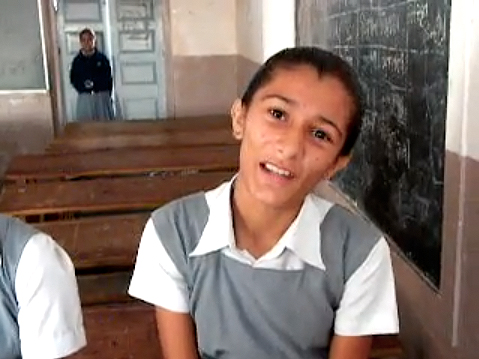Summer is finally here, and while schools are letting out for summer vacation, a group of Americans are going back to school for one year—in rural India. Every year, the Nanubhai Education Foundation sends English-speakers from the U.S. to teach in rural high schools in the western state of Gujarat in India. Their role is to mentor Indian teachers in the English language and skills to help improve education in village schools. In the past five years, the teaching program has sent 25 fellows to schools in India, with another 4 New Yorkers about to enter their first Indian classroom this month.
India has the second fastest growing economy in the world, second only to China. But it’s a country with wide disparities – around 70% of India’s 1.2 billion people still live in small villages, with little access to economic and educational opportunities. This is where Nanubhai comes in. The organization is trying to keep children in rural India – who often attend under-funded public high schools – from being left behind.
NEF Executive Director Nita Nehru, explains:
“India is booming, but only for the educated English-speaking strata. People who are farmers, shop keepers, taxi drivers; their wages are not going up. They can not afford the advertising they see everywhere. 950,000 people are without running water and 3 meals a day. Two of the most important things right now are technology and English language skills which they need to be part of the middle class.”
Through its program, NFE has already reached 10,000 students in Gujarat. The first school that Nanubhai worked with was Kadod High School, the school attended by NEF founder Raj Shah’s father. On a trip to India, Shah saw how the village school which educated his father had fallen into disrepair. Founded on the principal that everyone deserves equal access to education, Shah developed NEF to give back the opportunities he felt he was lucky to have had growing up as an Indian American.
Nehru also feels a strong connection to India from many family trips and she still has a lot of family there. “I associated it with fun, food and all those great things, but the negative side was the poverty; mounds of people sleeping outside the airport,” she said. “The poor are just being left behind as gap is getting bigger. I wanted to do something.”
For many Indian Americans, the Nanubhai Foundation is a way to give back and support the country where they or their parents emigrated from. This year’s Nanubhai annual gala, a major fundraiser, attracted over 300 people from the Indian diaspora community in New York. For the older generation, a sense of nostalgia for their home country encourages support through donations. For first and second generation Indians born in the U.S, the popularity of Indian culture in recent years has helped younger people celebrate their heritage.
But while much of the donations may come from the Indian American community, many of the fellows who travel to India on the NEF program are not Indian themselves. All of this year’s fellows are non-Indian. Although the founders assumed that more Indian Americans would apply, the program was not designed with particular demographics in mind and NEF says the applicants are chosen on the basis of their teaching experience .
Lindy Milton and Pamela Colon spent last year in India as fellows, teaching kids aged 7 – 17. They were the only white people most of the students had ever met. At first they found some parents were skeptical about how they were going to teach their children without speaking Gujarati, but ultimately Milton and Colon said the language barrier wasn’t a hinderance. By the end of the year, the students were speaking conversational English.
“I was touched by how my teenage female students just wanted to talk to me about life. They had been exposed to another part of the world. They only know Americans from the stereotypes they see on TV, so spending time with fellows from different backgrounds helps to open their eyes,” Milton said.
Nehru describes the relationship between fellows and students as a beautiful exchange. “The excitement of having western tutors really engages students, whether its because of seeing ‘white auntie in sari’ or because the teacher and student are forced to speak English; it gives them an opportunity to meet people they wouldn’t normally,” she said.
Nehru said she hopes more Indian Americans will apply for the fellowship in the future, but the goal is to help as many students as possible, irrespective of the nationality of the teachers. “Seeing the excitement on the child’s face is the most amazing feeling, knowing that you played a part in that,” she said. “The kids are excited to learn and hungry for knowledge.”





